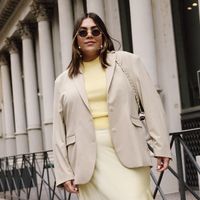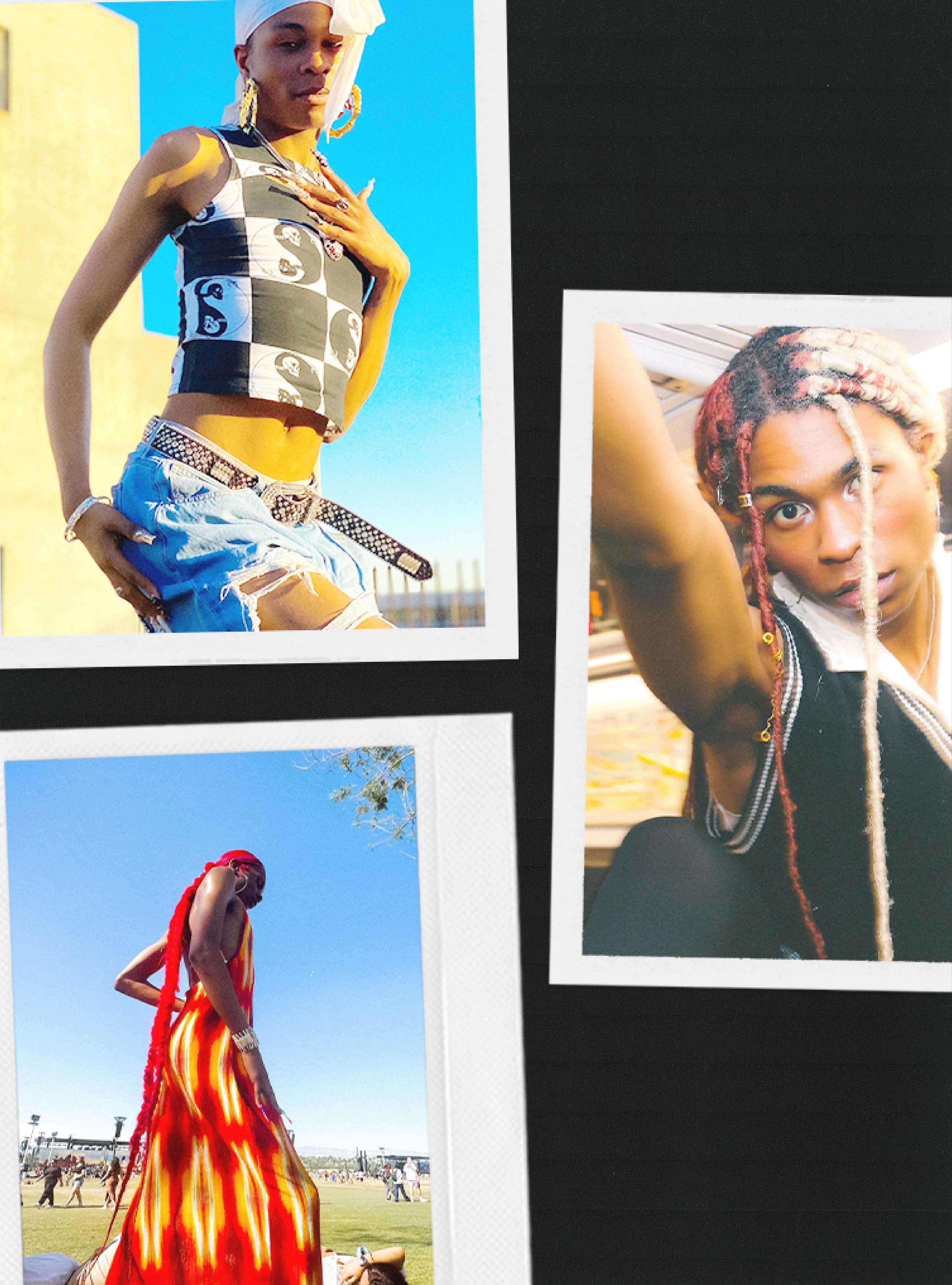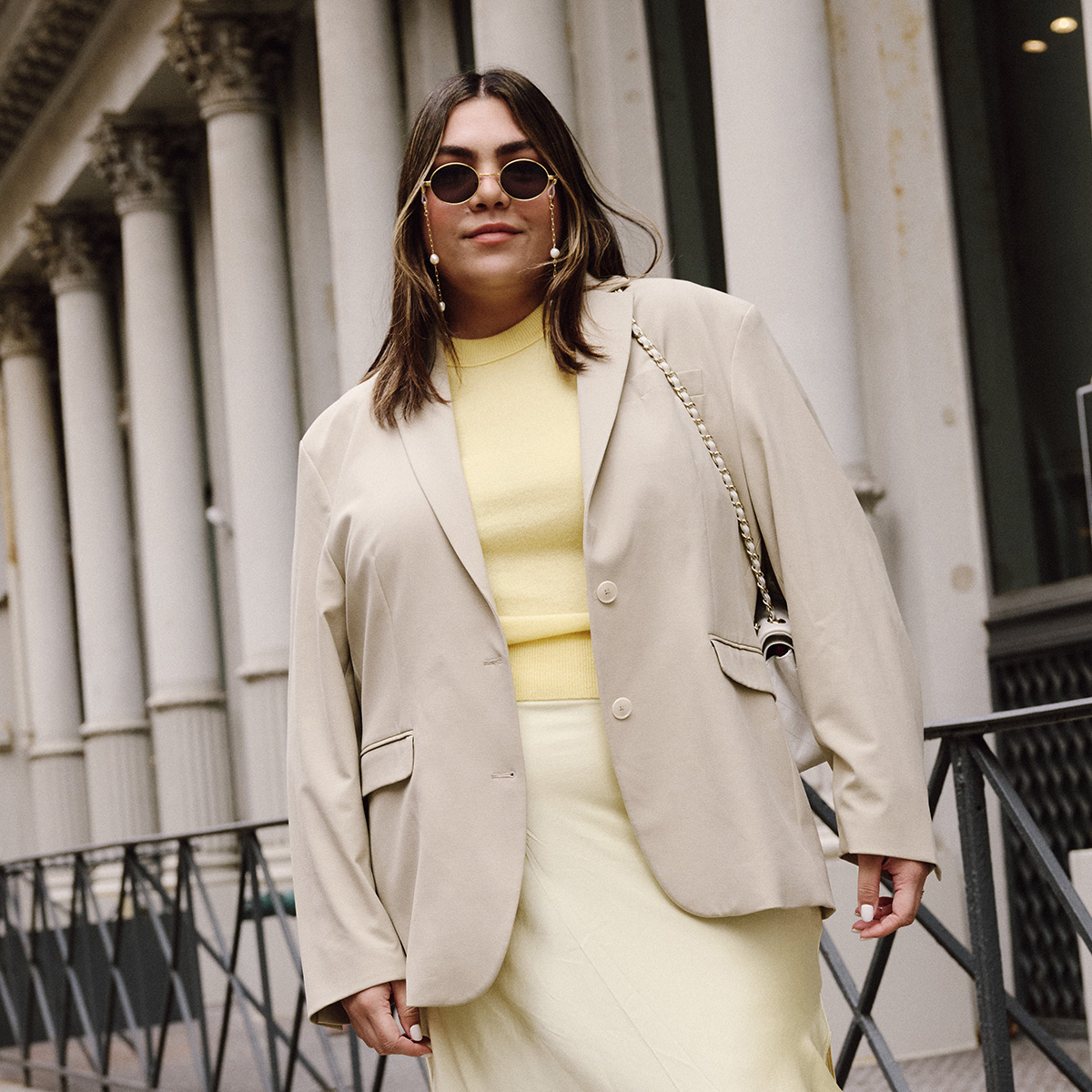When "Need" Becomes *Need*—the Safety of Online Shopping


At one point, going to the mall after school was a rite of passage for most teens and tweens in America. You probably jumped into someone’s mom’s minivan after school and headed to the local watering hole. Maybe you ate a food-court pretzel or bought oversize, somewhat tacky hoop earrings with leftover babysitting money. Buying capital-G grown-up clothing felt like a sacred, time-honored practice. You weren’t a kid anymore—you were an adult (or adult as you could be at 13 years old). While the act of partaking in America’s favorite pastime—mindless overconsumption—felt like a normal coming-of-age ritual we all did, we didn’t have to think about whether stepping foot into a physical store would put us in danger.
For transgender and nonbinary youth today, however, the United States political landscape is rife with aggressive legislation aimed to eradicate their existence, and there’s no battle fought more valiantly than one about money. After weeks of right wing–led violence and threats, Target, for example, altered and/or removed Pride-themed merchandise from its storefronts, especially in stores in areas that are being heavily targeted by anti-trans legislation.
In 2023 alone, there were 558 bills in 49 states introduced seeking to block trans people from equal access to healthcare, education, and legal recognition, according to the Trans Legislation Tracker. As of the time of publishing, that’s more than three anti-trans bills per day—not to mention the protests, podcasts, and public backlash against transgender creators. There’s also that video of Kid Rock shooting beer cans. Simply existing as a transgender or nonbinary person is an act of resistance. This is especially true for trans and gender-nonconforming youth, who have some of the highest suicide rates among any group of people in the country.
While the majority of people are given a pass to experiment with fashion and experience sartorial joy unapologetically, chances are it doesn’t come at the expense of their lives. For trans and nonbinary folk, shopping online isn’t just something that’s done for fun after a long day of work—shopping online is about survival.
For Alma Avalle, a food journalist, the first few months of her transition were filled with stylistic learning curves, something she didn’t pay much attention to before transitioning during the pandemic. Her days were filled with combing through Instagram and Twitter to soak up knowledge like a sponge. Things like what skirts to wear to make your hips look wider and what colors appear to make shoulders look slimmer were golden nuggets of advice passed down from generations of trans women before her. For the first few months, she took her findings to online marketplaces and sorted through friends’ closets for items of clothing she could wear and finally feel like herself. Her first purchase? A somewhat regrettable skirt from a fast-fashion retailer that she jokes is in the unofficial starter pack for all trans femmes. "I feel like it just shows up one day," Avalle said, laughing. "You change the pronouns in your bio, and it arrives on your doorstep." Yes, she’s talking about that infamous black skater circle skirt everyone was wearing in 2014. (Some things never change—we all go through a cringeworthy Tumblrified phase at one point or another.)

"No matter how scary and how bad things feel right now, we are going to be around forever because we have always been around. That's one of the benefits of having a wardrobe that feels sustainably made. I wasn't really planning for the future very much before I transitioned. One of the most exciting things is now getting to build a presentation that feels like something I'll get to stay in. It feels revolutionary."
Although Avalle prefers to head to physical thrift shops in New York City for her clothing needs, the privilege of existing in a progressive state isn’t lost on her. For those living in states that are denying trans and gender-nonconforming people rights and access, shopping in person sometimes isn't an option.
"It can be horrifying. You have this sense of everyone looking at you. You’ll come up with excuses in case you’re questioned. Sometimes, that’s you being in your head, but increasingly more and more across the country, it can feel dangerous,” Avalle explained to Who What Wear. On the other hand, adding something to your cart from the comfort of your home doesn’t come with the threat of violence over your head. There’s no one there to question why you’re trying on certain items of clothing or shopping in a certain part of a store. Even though gender is something that’s so public, it can feel so intimate and private at times, Avalle explained. "[By shopping online], you have time to sit with yourself and think, What do I want to look like? How do I want to dress? You can’t do that when you’re having an anxiety attack at the store,” she said.
The first time Matilda Phan experienced an in-store panic attack shopping for clothes, they were in an Abercrombie & Fitch in Jacksonville, Florida—in the heart of the nation’s current battleground against gender-affirming care led by presidential hopeful Ron DeSantis. Phan, who uses they/them pronouns, was allowed one shopping trip a year from elementary school to high school. While the semi-radioactive fumes of 2000s fizzy body spray are enough to make anyone’s skin start to itch, Phan’s style was confined to ultra-preppy, femme polo shirts and cotton twill pants. It wasn’t until they went to college, and eventually Los Angeles, that they started to grapple with the things they wanted to wear. Sensory-wise, Phan explained, feminine clothes just don’t work for them. They’re too itchy, too revealing, too snug, too strappy. "It feels like I’m wearing a costume,” they said.
Enter workwear. Long before Wranglers and leather chaps were the go-to uniforms for indie skater boys who reeked of sweat and Santal 33, workwear was reserved for people who appreciated lived-in, durable clothing for long days on the ranch or on the streets of Los Angeles’s downtown neighborhood markets. "The more I researched into it, the more I realized I wanted to pay respects to the original Vaqueros, who are Mexican cowboys. In L.A., you’re surrounded by the older gentlemen, and that’s their formalwear, and it’s so fucking cool,” Phan said. "They look so comfortable. They look like they can actually do stuff. That’s my favorite thing about Westernwear.”
But naturally, when you’re a petite 5’1” nonbinary shopper, walking into a hyper-masc cowboy store to buy a new pair of jeans can be just a tad intimidating. For the majority of their workwear, Phan now shops online. "It just felt like I didn’t belong in the store. And for a good reason, I think. They just see this little Asian guy and think, That’s a little interesting,” Phan explained. Even though Phan assured me the loud-and-proud cowboys are incredibly welcoming and nice, they would rather just avoid the experience altogether and shop online. "Going to a store with lots of masculine energy and going through the little boys' section—because that’s all that fits me—just feels really weird. I can comfortably go through the youth section without worrying if anyone is looking at me weird,” they said.

"The last time I went to Florida, I was in my full getup, and it felt at first like, 'Here I am back again, and these fuckers are gawking at me,' but I look good, and I feel good. That's my armor. Coming back and visiting feels like a 'take that!' moment. I'm cute. I'm sexy. What are you gonna do about it?”
Baby tees and big-shirt, little-pants combinations aside, the world of genderless clothing is one that’s been mischaracterized by the fashion industry for quite some time. While executives pat themselves on the back for creating sub-labels focused on simple, sleek clothing in muted colors to try to market as "made for everyone,” the reality is that the majority of what’s available on the market right now isn’t created with trans or nonbinary shoppers in mind. From construction to cut, the solution to fashion’s lack of inclusivity isn’t the actual pieces of clothing themselves—it’s accessibility. Most queer youths aren’t in a position to pay for an entirely new wardrobe when navigating their outward-facing presentation for the first time. And that’s if it’s even safe to do so, especially considering the steady rise of transphobia in right-wing spaces both on and offline over the last decade.
For Ty’Ren Tillett, experimenting with fashion and gender expression was only something that was allowed at school. Tillett, who uses any pronouns but feels most comfortable with he/him and they/them pronouns, would change the minute they got to school, where they were away from the prying eyes of their family members. He’d usually pull down his pants to reveal the Nicole Scherzinger–style micro shorts he was wearing underneath and unbutton his shirt. "My first moment of gender euphoria was when I rolled my shorts up for the first time. I thought I was killing the game—even though, looking back at it now, it looks like I had a diaper on,” the 22-year-old joked. From that moment on, a star was born.
Over the last two years, shopping has become more important than ever for the artist and aspiring model. Tillett has been buying more traditionally feminine pieces to add to their wardrobe, another pandemic change that only took off when browsing online stores. As with most trans and nonbinary shoppers, the world seemed to open when the pressure to buy out of necessity faded away. "I’m always perceived when I’m shopping [in person]. One thing about me is that people are going to stare regardless, so if I look how I look and I’m shopping where I want to, I don’t want to deal with the judgment all the time,” Tillett revealed. This, they said, is especially salient when they’re shopping between both the men’s and women’s sections.

"I feel most pretty in things that are idiosyncratic. I need the most outlandish piece of clothing, whether that be a texture or a cut or a style. I love playing around with patterns. Furs. Mwuah. Leather. Mwuah. Sleeveless. Boom. Crop tops. Boom. Those are my reliable go-tos. I feel fierce."
At the core, clothing doesn’t have a gender. It’s up to the people who wear it to decide. Just as Tillett bought Olivia Rodrigo–inspired plaid skirts to live out a rocker-girl fantasy, they’re also just as big of a proponent of ultra-wide-leg flared pants worn by men in the ’70s and the unofficial nonbinary-fashion-hottie bag of the moment sold exclusively online—the Telfar Shopping Tote. At this point, Tillett says, he’s limitless: "I’m having so much fun mixing and matching. It’s the most freeing thing in the whole wide world to be seen as just you.”
While it feels like clicking "add to cart” is just another silly task we do, the sartorial world being at our fingertips isn’t just an object of convenience. For queer youth, online shopping can be the only form of creative outlet they have when starting their transition. And frankly, the fantasy is what keeps Tillett alive. "I view my daily outfits when I wake up as, ‘What character do I want to play today?’ I’m in this space with presentation that is so playful, and I really feel like a lot of people in this world would be happy if they just got away from all of the rules,” they said. "I’m just trying to be me, look cute, and serve how I want to serve. And that’s not a crime—period.”
This story was published at an earlier date and has since been updated.

Ana Escalante is an award-winning journalist and Gen Z editor known for her sharp takes on fashion and culture. She’s covered everything from Copenhagen Fashion Week to Roe v. Wade protests as the Editorial Assistant at Glamour after earning her journalism degree at the University of Florida in 2021. At Who What Wear, Ana mixes wit with unapologetic commentary in long-form fashion and beauty content, creating pieces that resonate with a digital-first generation. If it’s smart, snarky, and unexpected, chances are her name’s on it.